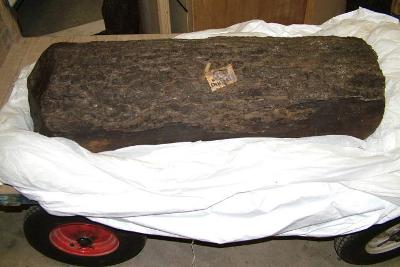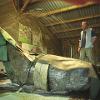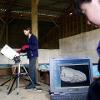Conserving Seahenge

As soon as they emerged from the sands of Holme beach, the timbers began to decay. Originally preserved by a thick layer of peat, they were now exposed to a number of damaging effects including sea water salts, wood-boring molluscs and worms. The timbers also suffered from the twice daily wetting and drying by the tide.
Once removed from the beach, the timbers were taken to the Bronze Age Centre at Flag Fen, near Peterborough. Here they were placed in freshwater tanks, the beach mud cleaned off and most of the salts removed.

The study of the timbers undertaken at Flag Fen revealed a wealth of information. The posts and stump all came from between 15 to 20 oak trees felled in spring 2049BC. A number of posts came from the same tree. The trees had been cut down and shaped with bronze axes. The marks left by up to 50 individual axes were preserved on the surface of the wood.
In 2003 the timbers were transferred to the Mary Rose Trust in Portsmouth. A complex conservation project started with them being placed in clean water to remove any remaining salts. They were then immersed in the special wax, polyethylene glycol (PEG), which gradually reinforced the cell structure of the wood. The timbers were then vacuum freeze-dried to remove any remaining water.

The excavation, conservation and study of the Seahenge timbers were funded by English Heritage.





